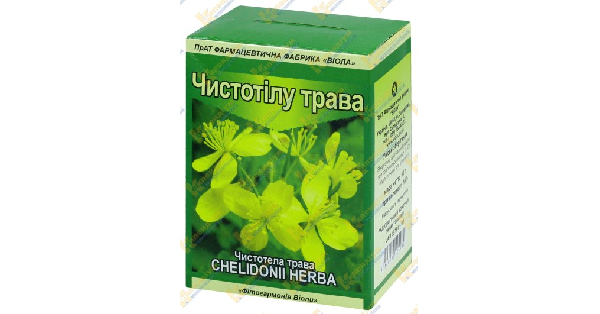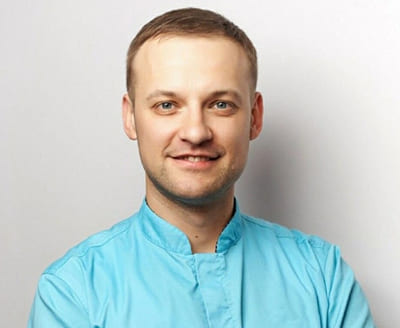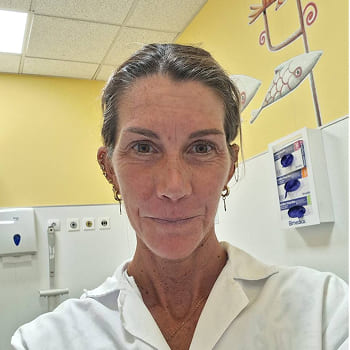

CISTOTILU TRAVA

Ask a doctor about a prescription for CISTOTILU TRAVA

How to use CISTOTILU TRAVA
INSTRUCTIONS FOR MEDICAL USE OF BUFOMIX EASYHALER
BUFOMIX EASYHALER (BUFOMIX EASYHALER)
Composition:
active substances: budesonide, formoterol fumarate dihydrate; 1 dose contains budesonide 320 mcg and formoterol fumarate dihydrate 9 mcg; excipient: lactose monohydrate.
Pharmaceutical form.
Powder for inhalation.
Main physical and chemical properties:
powder of white or yellowish-white color.
Pharmacotherapeutic group.
Means used in obstructive airway diseases. Adrenergic agents in combination with corticosteroids or other agents, except anticholinergic agents. Formoterol and budesonide. ATC code R03A K07.
Pharmacological properties.
Pharmacodynamics.
Mechanisms of action and pharmacodynamic effects
The Bufomix Easyhaler drug contains formoterol and budesonide, which have different mechanisms of action and exhibit additive effects on reducing asthma exacerbations. The mechanisms of action of both compounds are discussed below.
Budesonide. Budesonide is a glucocorticosteroid that, when inhaled, has a dose-dependent anti-inflammatory effect in the airways, resulting in reduced symptoms of bronchial asthma. Inhaled budesonide is characterized by fewer adverse effects than systemic corticosteroids. The exact mechanism of the anti-inflammatory effect of glucocorticosteroids is unknown.
Formoterol. Formoterol is a selective β2-adrenoceptor stimulant that, when inhaled, provides rapid and prolonged relaxation of bronchial smooth muscle in patients with reversible airway obstruction. The bronchodilatory effect is dose-dependent and occurs within 1-3 minutes. The duration of the effect is at least 12 hours after taking a single dose.
Clinical efficacy and safety
Bronchial asthma
Clinical trials in adult patients have shown that adding formoterol to budesonide alleviated symptoms of bronchial asthma and improved lung function, as well as reduced the frequency of exacerbations.
In two 12-week studies, the effect of budesonide/formoterol on lung function was the same as that of budesonide and formoterol in a random combination, and exceeded the effect of budesonide when used as monotherapy. All treatment groups used β2-adrenoceptor agonists of short duration as needed. Over time, no signs of weakening of the anti-asthmatic effect were observed.
Two 12-week studies were conducted in pediatric populations, involving 265 children aged 6-11 years who received maintenance doses of budesonide/formoterol (2 inhalations of 80 mcg/4.5 mcg/inhalation twice a day) and a β2-adrenoceptor agonist of short duration as needed. In both studies, an improvement in lung function and tolerability was observed compared to the use of the corresponding dose of budesonide as monotherapy.
Chronic obstructive pulmonary disease (COPD)
In two 12-month studies, the effect of the drug on lung function and the frequency of exacerbations (defined by the number of courses of oral steroids and/or a course of antibiotics and/or hospitalizations) was evaluated in patients with moderate or severe COPD. The inclusion criterion for both studies was a forced expiratory volume in 1 second (FEV1) before bronchodilator use of <50% of the predicted normal value. The median FEV1 after bronchodilator use at the time of inclusion in the study was 42% of the predicted normal value.
The average number of exacerbations per year (as defined above) was significantly reduced in the budesonide/formoterol group compared to formoterol monotherapy or placebo (average frequency of 1.4 compared to 1.8-1.9 in the placebo/formoterol group). The average number of days of oral corticosteroid use per patient over 12 months was slightly reduced in the budesonide/formoterol group (7-8 days/patient/year compared to 11-12 and 9-12 days in the placebo and formoterol groups, respectively). Regarding changes in lung function parameters such as FEV1, budesonide/formoterol treatment did not exceed the effect of formoterol alone.
Pharmacokinetics.
Absorption
It has been proven that the combination of fixed doses of budesonide and formoterol and the corresponding monopreparations are bioequivalent in terms of systemic exposure to budesonide and formoterol, respectively. Despite this, after administration of the fixed-dose combination, a slight suppression of cortisol was observed compared to monopreparations. It is believed that this difference has no effect on clinical efficacy.
There is no evidence of pharmacokinetic interactions between budesonide and formoterol.
The pharmacokinetic parameters of budesonide and formoterol were comparable after their administration as monopreparations or as a fixed-dose combination. In budesonide, the area under the concentration-time curve (AUC) and the rate of absorption were slightly higher, and the maximum plasma concentration (Cmax) was higher after administration of the fixed combination. In formoterol, Cmax was similar after administration of the fixed combination. Inhaled budesonide is rapidly absorbed, and Cmax is reached within 30 minutes after inhalation. In studies, the average lung deposition of budesonide after inhalation using a powder inhaler varied from 32% to 44% of the delivered dose. Systemic bioavailability was approximately 49% of the delivered dose. In children aged 6 to 16 years, lung deposition is in the same range as in adults after administration of the same dose. The resulting plasma concentrations were not determined.
Inhaled formoterol is rapidly absorbed, and Cmax is reached within 10 minutes after inhalation. In studies, the average lung deposition of formoterol after inhalation using a powder inhaler varied from 28% to 49% of the delivered dose. Systemic bioavailability was approximately 61% of the delivered dose.
Distribution and metabolism
Plasma protein binding is approximately 50% for formoterol and 90% for budesonide. The volume of distribution is approximately 4 L/kg for formoterol and 3 L/kg for budesonide. Formoterol is inactivated as a result of conjugation reactions (active O-demethylated and deformylated metabolites are formed, but they are mostly observed as inactivated conjugates). Budesonide undergoes significant (approximately 90%) biotransformation during the first pass through the liver to metabolites with low glucocorticosteroid activity. The glucocorticosteroid activity of the main metabolites, 6-β-hydroxybudesonide and 16-α-hydroxyprednisolone, is less than 1% of the glucocorticosteroid activity of budesonide. There is no evidence of any metabolic interactions or replacement reactions between formoterol and budesonide.
Excretion
Most of the formoterol dose is transformed by hepatic metabolism, followed by renal excretion. After inhalation, 8-13% of the delivered dose of formoterol is excreted in the urine in its unchanged form. Formoterol has a high systemic clearance (approximately 1.4 L/min), and the terminal half-life is approximately 17 hours.
Budesonide is excreted by metabolism, mainly under the influence of the CYP3A4 enzyme. Budesonide metabolites are excreted in the urine in their pure form or in a conjugated form. Only a very small amount of unchanged budesonide is found in the urine. Budesonide has a high systemic clearance (approximately 1.2 L/min), and the half-life of elimination from plasma after intravenous administration of a dose is 4 hours.
Pharmacokinetics of budesonide or formoterol in patients with renal impairment is unknown.
The effect of budesonide and formoterol may increase in patients with liver disease.
Linearity/Nonlinearity
Systemic exposure for budesonide and formoterol is in linear correlation with the applied dose.
Clinical characteristics.
Indications.
Bronchial asthma
The Bufomix Easyhaler drug (320 mcg/9 mcg) is indicated for adult and adolescent patients (aged 12 years and older) for the regular treatment of bronchial asthma when the use of a combination (inhaled corticosteroids and β2-adrenoceptor agonists of long duration) is justified:
- patients who do not achieve adequate control with inhaled corticosteroids and β2-adrenoceptor agonists of short duration, which are used as needed;
- patients who have already achieved adequate control with the use of both inhaled corticosteroids and β2-adrenoceptor agonists of long duration.
Chronic obstructive pulmonary disease (COPD)
The Bufomix Easyhaler drug is indicated for the symptomatic treatment of adult patients aged 18 years and older with COPD with FEV1 <70% of the predicted normal value (after bronchodilator use) and a history of exacerbations, despite regular therapy with bronchodilators.
Contraindications.
Increased sensitivity to budesonide, formoterol, or lactose, which contains a small amount of milk protein.
Interaction with other drugs and other types of interactions.
Pharmacokinetic interactions
Potent inhibitors of CYP3A4 (e.g., ketoconazole, itraconazole, voriconazole, posaconazole, clarithromycin, telithromycin, nefazodone, and HIV protease inhibitors) are likely to increase the level of budesonide in the blood, so their simultaneous use should be avoided. If this is not possible, the interval between taking these drugs should be as long as possible.
The potent CYP3A4 inhibitor ketoconazole at a dose of 200 mg once daily increases the level of budesonide in the blood, which is administered orally (single dose of 3 mg), on average, 6 times. When ketoconazole was taken 12 hours after budesonide, the concentration increased, on average, only 3 times, which suggests that separate administration may reduce the increase in budesonide levels in the blood. Some data indicate that there may be a significant increase in budesonide levels in the blood (on average, 4 times) when taken simultaneously with inhaled budesonide (single dose of 1000 mcg) and itraconazole at a dose of 200 mg once daily.
It is expected that the concomitant use of drugs containing cobicistat will increase the risk of systemic side effects. Combinations should be avoided if the benefit does not outweigh the increased risk of systemic corticosteroid side effects. In this case, patients should be monitored for systemic corticosteroid side effects.
Pharmacodynamic interactions
β-adrenoblockers may weaken the effect of formoterol. Therefore, the Bufomix Easyhaler drug should not be used together with β-adrenoblockers (including eye drops) unless there are compelling reasons for this.
Concomitant treatment with quinidine, disopyramide, procainamide, phenothiazine, antihistamines (terfenadine), and tricyclic antidepressants may prolong the QTc interval and increase the risk of ventricular arrhythmia.
In addition, levodopa, levothyroxine, oxytocin, and alcohol may worsen the tolerance of the heart to β2-sympathomimetics.
Concomitant use of monoamine oxidase inhibitors, including drugs with similar properties, such as furazolidone and procarbazine, may cause hypertensive reactions.
The risk of arrhythmia increases against the background of anesthesia with halogenated hydrocarbons.
Concomitant use of other β-adrenergic agents or anticholinergic agents may enhance the bronchodilatory effect.
Hypokalemia may increase the susceptibility to cardiac arrhythmias in patients treated with digitalis glycosides.
No interaction between budesonide and formoterol and any of the drugs used to treat bronchial asthma has been observed.
Pediatric populations
Drug interaction studies were conducted only in adults.
Special instructions.
It is recommended to gradually reduce the dose when refusing the drug and not to stop its use abruptly.
If patients feel that the treatment is ineffective or there is a need to exceed the maximum recommended dose of the Bufomix Easyhaler drug, they should consult a doctor.
More frequent use of bronchodilators of short duration indicates a worsening of the patient's condition and the need to review the treatment of bronchial asthma.
A sudden and rapid worsening of control over bronchial asthma or COPD can be life-threatening, so the patient should undergo a medical examination immediately. In this case, the need for intensification of corticosteroid therapy, for example, a course of oral corticosteroids, or antibiotic treatment in case of infection should be considered.
It is necessary to advise the patient to always carry a rescue inhaler with them.
Patients should be reminded to take the maintenance dose of the Bufomix Easyhaler drug according to the prescription, even in the absence of symptoms.
As soon as the symptoms of bronchial asthma are brought under control, it is necessary to consider the question of gradually reducing the dose of the Bufomix Easyhaler drug. It is important to regularly examine patients in case of dose reduction. The lowest effective dose of the Bufomix Easyhaler drug should be used.
Do not start using this drug during exacerbations, significant worsening, or sudden complications of bronchial asthma.
During the use of the drug, serious side effects and exacerbations related to bronchial asthma may occur. Patients need to be informed about the need to continue treatment and consult a doctor if symptoms of bronchial asthma are not controlled or worsen after starting the Bufomix Easyhaler drug.
There are no data from clinical studies on the use of the Bufomix Easyhaler drug in patients with COPD with a pre-bronchodilator FEV1 value of >50% of the predicted normal value and a post-bronchodilator FEV1 value of <70% of the predicted normal value.
As with other types of inhalation therapy, there is a risk of developing paradoxical bronchospasm. In this case, the patient experiences an increase in wheezing and shortness of breath immediately after taking a dose. Paradoxical bronchospasm responds to fast-acting inhalation bronchodilators, and it should be treated urgently. The patient should stop taking the Bufomix Easyhaler drug immediately, undergo a medical examination, and receive alternative therapy if necessary.
Systemic effects of inhaled corticosteroids may occur, particularly with the use of high doses over a long period. These effects are much less likely than the effects of oral corticosteroids. Possible systemic effects include Cushing's syndrome, Cushingoid appearance, adrenal suppression, growth retardation in children and adolescents, decreased bone mineral density, cataracts, and glaucoma. There may also be an increased susceptibility to infections and a worsening of the ability to adapt to stress. These effects are likely to be dose-dependent, time-dependent, and dependent on concurrent or previous corticosteroid use, as well as individual sensitivity.
Patients should be advised to rinse their mouths with water after inhaling the maintenance dose to minimize the risk of developing oropharyngeal candidiasis. If oropharyngeal candidiasis occurs, patients should rinse their mouths with water after using the drug as needed.
It is necessary to avoid concomitant treatment with itraconazole, ritonavir, or other potent CYP3A4 inhibitors. If this is not possible, the time interval between taking the drugs should be as long as possible.
Caution should be exercised when prescribing the Bufomix Easyhaler drug to patients with thyrotoxicosis, pheochromocytoma, diabetes mellitus, untreated hypokalemia, hypertrophic obstructive cardiomyopathy, idiopathic subvalvular aortic stenosis, severe hypertension, aneurysm, or other severe cardiovascular disorders, such as ischemic heart disease, tachyarrhythmia, and severe heart failure.
Caution should be exercised when treating patients with a prolonged QTc interval. Formoterol itself can cause prolongation of the QTc interval.
In patients with active or inactive pulmonary tuberculosis, fungal or viral infections of the respiratory tract, it is necessary to reassess the need for and dose of inhaled corticosteroids.
When treating with high doses of β2-adrenergic agonists, potentially life-threatening hypokalemia may develop. The hypokalemic effect of β2-adrenergic agonists can be enhanced by concomitant treatment with β2-adrenergic agonists and drugs that can cause hypokalemia or enhance the hypokalemic effect, such as xanthine derivatives, steroids, and diuretics. Particular caution is necessary in unstable bronchial asthma in case of irregular use of rescue bronchodilators, in acute severe bronchial asthma, as the associated risk is increased by hypoxia, as well as in other conditions where the risk of hypokalemia is increased. In these cases, it is recommended to monitor the potassium level in the blood serum.
As with the use of other β2-adrenergic agonists, in patients with diabetes, it is necessary to additionally monitor blood glucose levels.
Pneumonia in patients with COPD
In patients with COPD who received inhaled corticosteroids, an increased frequency of pneumonia was observed, including cases of pneumonia that required hospitalization. There are some data on an increased risk of pneumonia with increasing doses of steroids, but this has not been proven conclusively in all studies.
There is no convincing clinical evidence of differences in the risk of pneumonia between inhaled corticosteroid preparations.
Doctors should remain vigilant for the possible development of pneumonia in patients with COPD, as the clinical signs of such infections coincide with the symptoms of COPD exacerbation.
Risk factors for pneumonia in patients with COPD include smoking, old age, low body mass index, and severe COPD.
The Bufomix Easyhaler drug contains approximately 8 mg of lactose per inhalation.
Normally, such an amount does not cause problems in patients who are lactose intolerant. The excipient lactose contains a small amount of milk protein, which can cause allergic reactions.
Use during pregnancy or breastfeeding.
Pregnancy.
There are no clinical data on the effect of the Bufomix Easyhaler drug on pregnancy or concomitant treatment with formoterol and budesonide. Studies of embryonic development in animals did not demonstrate any additional effect of the combination.
There are insufficient data on the use of formoterol in pregnant women. Formoterol caused side effects in animals during studies of the effect on the reproductive system at very high levels of systemic exposure.
Data on approximately 2000 studied cases of pregnancy did not show an increased teratogenic risk associated with the use of inhaled budesonide. In animal studies, it has been shown that glucocorticosteroids cause developmental abnormalities. This is unlikely in humans who use the drug in the recommended dose.
In animal studies, it has also been found that an excessive amount of prenatal glucocorticoids increases the risk of intrauterine growth retardation, cardiovascular diseases in adults, irreversible changes in glucocorticoid receptor density, neurotransmitter turnover, and behavior at concentrations below the teratogenic dose range.
During pregnancy, the Bufomix Easyhaler drug should be used only when the expected benefit outweighs the potential risk. The lowest effective dose of budesonide necessary to maintain adequate control over bronchial asthma should be used.
Breastfeeding.
Budesonide is excreted in breast milk. However, at therapeutic doses, no effect on the child is expected. It is not known whether formoterol is excreted in human breast milk. A small amount of formoterol was found in the maternal milk of animals. The use of the Bufomix Easyhaler drug in breastfeeding women should be considered only when the expected benefit to the mother outweighs any potential risk to the infant.
Fertility.
There are no data on the potential impact of budesonide on fertility. In studies of the effect of formoterol on reproductive function in animals, a slightly reduced fertility was found in male rats at high systemic exposure.
Influence on the ability to drive vehicles and operate machinery.
The Bufomix Easyhaler drug does not affect or slightly affects the ability to drive vehicles and operate machinery.
Method of application and dosage.
Dosage
Bronchial asthma
The Bufomix Easyhaler drug is not intended for initial treatment of bronchial asthma. The doses of the components of the Bufomix Easyhaler drug are selected individually and adjusted according to the severity of the disease. This should be taken into account not only at the beginning of the use of combination drugs but also when adjusting the maintenance dose. If a patient needs a combination of doses that differs from those available in the combination inhaler, the corresponding doses of β2-adrenoceptor agonists and/or corticosteroids should be prescribed in separate inhalers.
Recommended doses:
- Adults (aged 18 years and older): 1 inhalation 2 times a day. Some patients may need up to 2 inhalations 2 times a day.
- Adolescents (12-17 years): 1 inhalation 2 times a day.
Patients need to undergo regular medical examinations to ensure that the dose of the Bufomix Easyhaler drug remains optimal. The dose should be titrated to the lowest dose that effectively controls the symptoms of the disease. After achieving long-term control of symptoms with the lowest recommended dose, an attempt should be made to control symptoms using only an inhaled corticosteroid.
Usually, after achieving control over the symptoms of the disease with the use of the drug 2 times a day, the dose is titrated to the lowest effective dose, including the use of the Bufomix Easyhaler drug 1 time a day, in cases where the doctor believes that the patient needs maintenance therapy with a bronchodilator of long duration in combination with an inhaled corticosteroid.
More frequent use of an additional fast-acting bronchodilator indicates a worsening of the patient's condition and the need to review the treatment of bronchial asthma.
Children (aged 6 years and older): for use in children aged 6-11 years, a drug form with a lower dosage (80 mcg/4.5 mcg/dose) is available.
Children under 6 years of age: since only limited data are available, the Bufomix Easyhaler drug is not recommended for use in children under 6 years of age.
The Bufomix Easyhaler drug 320 mcg/9 mcg/dose should be used only for maintenance therapy. For maintenance therapy and relief of symptoms with the Bufomix Easyhaler drug, drug forms with lower strengths (160 mcg/4.5 mcg/dose and 80 mcg/4.5 mcg/dose) are available.
COPD
Recommended doses:
- Adults: 1 inhalation 2 times a day.
General information
Special patient groups
There are no special requirements for dosing the Bufomix Easyhaler drug in elderly patients. Data on the use of the Bufomix Easyhaler drug in patients with impaired renal or hepatic function are not available. Since budesonide and formoterol are excreted mainly through hepatic metabolism, in patients with severe liver cirrhosis, an increase in the effect of the drug can be expected.
Method of application
For inhalation.
How to properly use the Bufomix Easyhaler drug
The inhaler is air-flow controlled. This means that when the patient inhales air through the mouthpiece, the substance enters the airways along with the inhaled air.
| Remove the protective cap from the Easyhaler mouthpiece |
| Shake the inhaler 3-5 times in a vertical position |
| PRESS |
| PRESS |
| PRESS |
| PRESS |
| To release 1 dose of the drug, place the Easyhaler between the thumb and index finger and press the inhaler once - you will hear a click |
| LIPS |
| Exhale fully, close the mouthpiece with your lips, and inhale deeply, holding your breath for 5-10 seconds |
| If you are prescribed more than 1 dose, repeat steps 2, 3, 4 |
| Close the Easyhaler mouthpiece with a protective cap |
| The dose counter will help you understand how many doses of the drug are left. The counter switches every 5 doses. The red area on the counter means that there are 20 doses left in the Easyhaler |
It is essential to draw the patient's attention to the following:
- Read the instructions for medical use carefully.
- Shake the device and bring it into action before each inhalation.
- Inhale through the mouthpiece actively and deeply enough to ensure the optimal dose of the substance enters the lungs.
- Do not exhale through the mouthpiece, as this will reduce the delivered dose. If this happens, the patient should tap the inhaler on the surface of the table or the palm of their hand to remove the powder from the mouthpiece, and then repeat the procedure for taking the drug.
- Do not bring the device into action more than once without inhaling the powder. If this happens, the patient should tap the inhaler on the surface of the table or the palm of their hand to remove the powder from the mouthpiece, and then repeat the procedure for taking the drug.
- Always put the protective cap on the inhaler after use to prevent accidental release of powder from the device (which can lead to overdose or inhalation of an insufficient amount of the drug during the next use of the inhaler).
- Rinse your mouth with water after inhaling the prescribed dose to minimize the risk of developing oropharyngeal candidiasis. If oropharyngeal candidiasis occurs, patients should rinse their mouths with water after using the drug as needed.
- Regularly clean the mouthpiece with a dry cloth. Water should not be used for cleaning, as the powder is hygroscopic.
- Replace the Bufomix Easyhaler inhaler when the dose counter shows zero, even if some powder is still visible inside the device.
Children.
The Bufomix Easyhaler drug is not recommended for children under 12 years of age for the treatment of bronchial asthma.
In children who have been using inhaled corticosteroids for a long time, it is recommended to regularly measure growth. If growth slows down, the treatment regimen should be reviewed to reduce the dose of the inhaled corticosteroid to the minimum that ensures effective control over the course of bronchial asthma. The benefits of corticosteroid treatment and the risk of growth retardation should be carefully weighed. Additionally, the patient should be referred to a pediatric pulmonologist.
Some data from long-term studies suggest that most children and adolescents who undergo treatment with inhaled budesonide eventually reach their target height in adulthood. At the same time, an initial slight temporary decrease in growth (approximately 1 cm) was observed. This usually occurs during the first year of treatment.
The Bufomix Easyhaler drug should not be used in children for the treatment of COPD.
Overdose.
Overdose of formoterol may be accompanied by symptoms that are typically observed with overdose of β2-adrenoceptor agonists: tremors, headache, rapid heartbeat. In individual cases, symptoms such as tachycardia, hyperglycemia, hypokalemia, prolonged QTc interval, arrhythmia, nausea, and vomiting have been reported. Supportive and symptomatic treatment is indicated. A dose of 90 mcg, taken over three hours by patients with acute bronchial obstruction, was safe.
In the case of acute overdose of budesonide, even after taking excessive doses, clinical problems are not expected. With chronic use of excessive doses, glucocorticosteroid effects, such as hypercorticism and suppression of adrenal cortex function, may occur.
If therapy with the Bufomix Easyhaler drug needs to be discontinued due to formoterol overdose, it is necessary to consider ensuring adequate therapy with inhaled corticosteroids.
Side effects.
Since the Bufomix Easyhaler drug contains both budesonide and formoterol, patients may experience side effects characteristic of these two substances. After simultaneous administration of these two substances, no increase in the frequency of side effects was observed. The most common drug-related side effects correspond to the pharmacologically predicted side effects of β2-agonist treatment. These are such side effects as tremors and rapid heartbeat, which are usually mild and disappear within a few days.
Below, by system and frequency of development, are side effects associated with budesonide or formoterol. The frequency is determined by the following scale: very common (≥1/10), common (≥1/100, <1/10), uncommon (≥1/1000, <1/100), rare (≥1/10000, <1/1000), very rare (<1/10000).
Infectious and parasitic diseases
Common: oropharyngeal candidiasis, pneumonia (in patients with COPD).
Immune system disorders
Rare: immediate or delayed hypersensitivity reactions, such as exanthema, urticaria, pruritus, dermatitis, angioedema, and anaphylactic reaction.
Endocrine system disorders
Very rare: Cushing's syndrome, suppression of adrenal cortex function, growth retardation, decreased bone mineral density.
Metabolic and nutritional disorders
Rare: hypokalemia.
Very rare: hyperglycemia.
Psychiatric disorders
Uncommon: aggression, psychomotor hyperactivity, anxiety, sleep disturbances.
Very rare: depression, changes in behavior (mostly in children).
Nervous system disorders
Common: headache, tremors.
Uncommon: dizziness.
Very rare: taste disturbances.
Eye disorders
Uncommon: blurred vision.
Very rare: cataracts and glaucoma.
Cardiovascular disorders
Common: rapid heartbeat.
Uncommon: tachycardia.
Rare: cardiac arrhythmias, such as atrial fibrillation, supraventricular tachycardia, extrasystole.
Very rare: angina pectoris, prolonged QTc interval, blood pressure fluctuations.
Respiratory, thoracic, and mediastinal disorders
Common: moderate irritation of the throat, cough, dysphonia, including hoarseness.
Rare: bronchospasm.
Gastrointestinal disorders
Uncommon: nausea.
Skin and subcutaneous tissue disorders
Uncommon: bruising.
Musculoskeletal and connective tissue disorders
Uncommon: muscle spasms.
Oropharyngeal candidiasis is caused by the deposition of the drug. Patients should be advised to rinse their mouths with water after each dose to minimize the risk. Oropharyngeal candidiasis usually responds to local antifungal treatment and does not require discontinuation of inhaled corticosteroids. In case of development of oropharyngeal candidiasis, patients should also rinse their mouths with water after using the drug as needed.
As with other types of inhalation therapy, paradoxical bronchospasm may develop in rare cases, affecting 1 in 10,000 patients. In this case, the patient experiences an increase in wheezing and shortness of breath immediately after taking a dose. Paradoxical bronchospasm responds to fast-acting inhalation bronchodilators, and it should be treated urgently. The patient should stop taking the Bufomix Easyhaler drug immediately, undergo a medical examination, and receive alternative therapy if necessary.
Systemic effects of inhaled corticosteroids may occur, particularly with the use of high doses over a long period. These effects are much less likely than the effects of oral corticosteroids. Possible systemic effects include Cushing's syndrome, Cushingoid appearance, adrenal suppression, growth retardation in children and adolescents, decreased bone mineral density, cataracts, and glaucoma. There may also be an increased susceptibility to infections and a worsening of the ability to adapt to stress. These effects are likely to be dose-dependent, time-dependent, and dependent on concurrent or previous corticosteroid use, as well as individual sensitivity.
Treatment with β2-agonists may lead to an increase in insulin, free fatty acids, glycerol, and ketone bodies in the blood.
Pediatric populations
It is recommended to regularly monitor the growth of children who have been using inhaled corticosteroids for a long time.
Reporting suspected adverse reactions
It is essential to report suspected adverse reactions after the drug has been authorized. This allows for the continuous monitoring of the benefit-risk balance of the drug. Healthcare professionals are asked to report any suspected adverse reactions through the national reporting system.
Shelf life.
2 years in a laminated package.
Use within 4 months after opening the laminated package.
Storage conditions.
Before opening the laminated package, the drug does not require special storage conditions. After opening the laminated package, store at a temperature not exceeding 25°C in a protected from moisture place. Store in a place inaccessible to children.
Packaging.
60 doses in an inhaler with a protective cap in a laminated package.
1 laminated package in a cardboard box.
Release category.
By prescription.
Manufacturer.
Orion Corporation.
Manufacturer's location and address of its activities.
Orionintie 1, 02200 Espoo, Finland.
- Country of registration
- Prescription requiredYes
- Manufacturer
- This information is for reference only and does not constitute medical advice. Always consult a licensed doctor before taking any medication. Oladoctor is not responsible for medical decisions based on this content.
- Alternatives to CISTOTILU TRAVADosage form: tablets, 300 mgActive substance: thioctic acidManufacturer: АТ "КИЇВСЬКИЙ ВІТАМІННИЙ ЗАВОДPrescription requiredDosage form: tablets, 600 mgActive substance: thioctic acidManufacturer: АТ "КИЇВСЬКИЙ ВІТАМІННИЙ ЗАВОДPrescription requiredDosage form: capsules, 600 mg capsules in blister packsActive substance: thioctic acidManufacturer: Каталент Німеччина Ебербах ГмбХPrescription required
Alternatives to CISTOTILU TRAVA in other countries
The best alternatives with the same active ingredient and therapeutic effect.
Alternative to CISTOTILU TRAVA in Spain
Online doctors for CISTOTILU TRAVA
Discuss dosage, side effects, interactions, contraindications, and prescription renewal for CISTOTILU TRAVA – subject to medical assessment and local rules.














